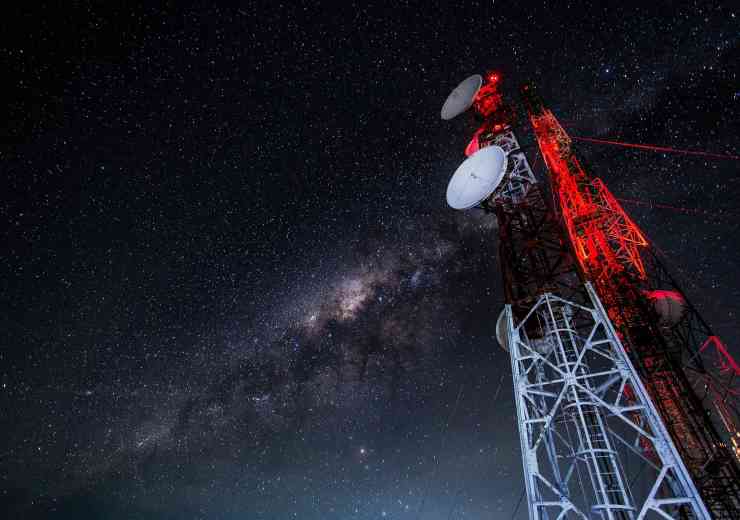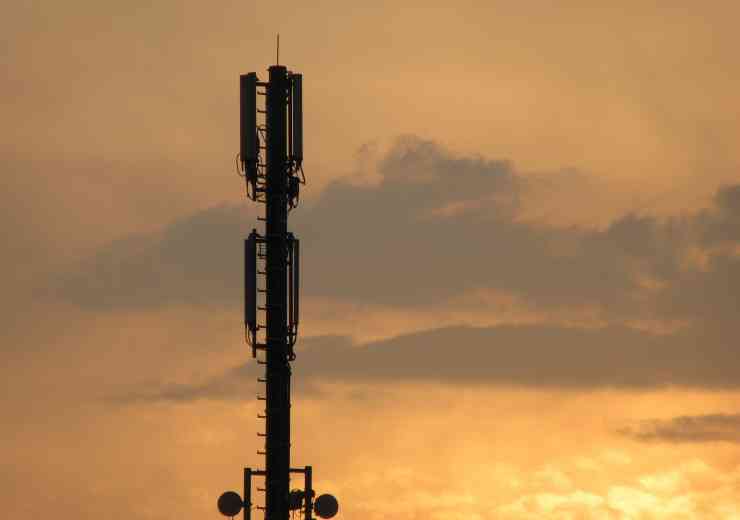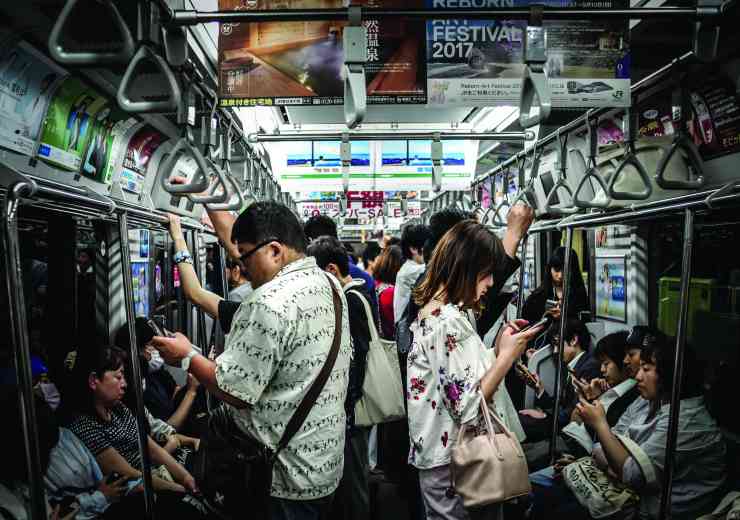The rise of TETRA
 The TETRA (Terrestrial Trunked Radio) communications standard was born in ETSI (European Telecommunications Standards Institute) in the 1990s, designed to meet the requirements of public safety and government users, commercial professional users, operators, spectrum regulators, manufacturers and others involved in the implementation of critical communications.
The TETRA (Terrestrial Trunked Radio) communications standard was born in ETSI (European Telecommunications Standards Institute) in the 1990s, designed to meet the requirements of public safety and government users, commercial professional users, operators, spectrum regulators, manufacturers and others involved in the implementation of critical communications.
Today, TETRA is the public safety communications technology used by governments around the globe, delivering secure, reliable and robust critical communications to protect citizens worldwide. This endorsement and rapid adoption of TETRA by the public safety sector has catalysed its use in an increasingly wide range of markets. These include air, rail, road and water transport, utilities, mining, oil and gas exploration, extraction and delivery industries, commercial, retail and leisure organisations – all sectors looking for critical communications capability. TETRA is also regularly deployed to ensure resilient and secure communications at major sporting events such as the FIFA World Cup, Formula One racing, and of course the Olympic Games.
Security and safety
The TETRA standard is designed to deliver capabilities that are essential for public safety services to carry out their work effectively and efficiently, thus maximising public protection during normal day-to-day events and during major planned and unplanned events.
Security of communications services is essential, and TETRA builds on the inherent security strengths of digital technology. TETRA’s security measures deliver the strongest levels of protection; ensuring the privacy of conversations and the secure transmission of sensitive data. Authentication at the connection between the TETRA terminal and the network controls voice and data traffic to ensure that transmissions are from approved users – and in reverse, ensuring that it is your network! Air interface encryption then protects the communications between the base station and individual terminals and between terminals when outside network coverage. For those users that need even more protection, end to end encryption can be added.
TETRA also enables networks to be partitioned. This means that different user groups, such as police, fire, and ambulance services, can have access to independent private communications over their own Virtual Private Network (VPN) securely tunnelled across the system. If interoperability between agencies is required, this can be immediately and securely provisioned so specific inter-agency talk groups can be created.
If a terminal is misplaced or stolen it can be immediately disabled, preventing unauthorised people listening in to conversations or viewing sensitive information.
Given the environments in which public safety organisations may need to operate, communications clarity is of paramount importance. TETRA call clarity is exceptional due to digital technology and special coding algorithms that help to screen out background noise. TETRA’s capacity management features support rapid call set-up across many users and over large areas, even if a network is being used heavily over a small geographical area during a major event. Group calls can be activated at the touch of a button – inside 500 milliseconds – enabling almost instantaneous group communication, collaboration and coordination. Many TETRA solutions also enable calls to be recorded for analysis to refine crisis management and operational procedures.
Remote control
TETRA’s narrowband data capability enables the sending and receiving of images, and interaction with more advanced remote applications. For example, dispatch teams can send information to emergency response officers about an incident they are about to attend. The intelligence may include statistics on likely injuries and the number of casualties for paramedics. Police dispatch teams can access the records of a suspect and review the types of officers available to assess the best way to approach the individual.
Firefighters can also transmit images to control centres for assistance in identifying symbols on chemical storage drums; police officers looking for a suspect for a street robbery can be sent real-time pictures of the individual from security cameras, while paramedics can provide pictures of a casualty’s injury to a remote specialist to seek treatment advice.
By applying TETRA’s two way data communication channel, public safety officers can also manage administration away from the office, using voice to text recognition, tablet and stylus data entry, drop-down forms and on-screen keyboards. Police officers can log incidents and update records on the move, so they spend more time patrolling rather than managing paperwork back at base. Real-time field-based biometric systems enable police officers to use their TETRA devices to capture the fingerprints of a suspect and immediately verify identity against a remote database in a matter of seconds.
All public safety users, particularly fire and rescue services, can face hazardous environments and the possible presence of explosive substances, dust and gases. TETRA terminals with ATEX1* certification are built to comply with rigorous requirements, enabling public safety agencies to operate in the most challenging conditions.
Nationwide public safety support
In Great Britain: The largest TETRA public safety network in the world to date is the Airwave Network. This covers 99 per cent of Great Britain’s landmass and delivers critical voice and data communications. The Network was purpose-built to meet the needs of the emergency services, and since 2005 has been rolled out to all police forces, fire and rescue services and ambulance trusts throughout Great Britain. In addition, several organisations with a public safety remit and responsible for assisting during an emergency response also use the Airwave Service.
Airwave is also an official supplier to the London Organising Committee of the Olympic and Paralympic Games Ltd (LOCOG). Airwave will deliver a private mobile radio service across all the London 2012 venues via the purpose-built Apollo network, a new independent communications infrastructure. As the largest international event ever staged in the UK, the London 2012 Games are an opportunity to showcase Great Britain’s TETRA critical communications infrastructure.
In the Republic of Ireland: The Tetra Ireland consortium has built a fully integrated service via a national TETRA network. Tetra Ireland operates the network as a fully managed commercial service, providing the emergency services, public safety and civil protection users with secure voice and data, robust radio coverage and inter-agency communications.
In Belgium: ASTRID is the operator of the national TETRA network, built to solve the communications issues of the emergency services. Hundreds of small analogue networks were in operation throughout the country, each discipline using a different frequency. This patchwork made any form of co-ordination difficult, with jumbled and inaudible messages the result of the limited capacity on the analogue networks.
The Belgian government chose to set up a common network to be shared by all emergency and security services and ASTRID was created in 1998.
Today, the ASTRID network enables the police, the fire services, emergency medical services and other organisations involved in public safety to communicate seamlessly. The radio network is based on the concept of the ‘talk group’, meaning the dynamic creation of groups of people who need to communicate with each other during specific operations.
In Hungary: The nationwide authority network EDR is operated by Pro-M. The EDR network was launched in 2006, and is used by the police, customs officials, fire brigades, disaster prevention agencies, and ambulance services, as well as other organisations engaged in safeguarding the public. In Sweden: Rakel is the national digital communications system used by the emergency services and others in the fields of civil protection, public safety and security, emergency medical services and healthcare.
In Iceland: Neydarlinan 112 is the organisation that manages the public safety TETRA network serving the emergency services, maritime and border agencies, aviation authority, coast guard, voluntary rescue organisation, public utilities and road administration. The network is also crucial to new homeland security measures being implemented following the departure of the US forces that had traditionally provided helicopter rescue services. Completed in 2009, the network serves some 5500 users and has already proven itself in two major disasters, an earthquake and a volcanic eruption.
In Germany: The Federal Agency for Digital Radio of Security Authorities and Organisations (BDBOS) is currently implementing the nationwide TETRA communications system for the police forces of the Federation and the Länder, fire brigades and rescue services, the Federal Agency for Technical Relief, customs authorities and intelligence services. The new TETRA system will replace the technically obsolete analogue radio system currently used by security authorities. And in Norway: The roll out of the nationwide Nødnett TETRA network for Norway’s public safety agencies continues.
This is just a snapshot of the role that TETRA technology plays in ensuring the safety of the public. We have only touched on Europe in this article, but TETRA is in use by public safety agencies worldwide. As an example, two TETRA systems in Asia – those of the Shanghai Police and the Hong Kong Police Force, were recognised in the 2012 International TETRA Awards for their excellence and innovation. The annual TETRA World Congress was held this year in Dubai, recognising the Middle East as the fastest growing TETRA market in the world today. Whether you are at home or abroad, it is a fair bet that at some point you will be protected by TETRA technology, designed to protect the public.
The TETRA + Critical Communications Association
The TETRA MoU (Memorandum of Understanding) Association, now the TCCA (the TETRA + Critical Communications Association), was established in 1994 to act on behalf of all interested parties in the development of the TETRA communications standard, and today continues to develop, promote and protect the TETRA standard worldwide. Members include manufacturers, application providers, integrators, operators, test houses and telecommunications agencies. The TCCA represents more than 160 organisations from all continents of the world, providing a forum for all those interested in TETRA and the future of critical communications.
Members of the TCCA have the opportunity to be fully involved in influencing and advancing critical communications technology. Users can share knowledge, experience and requirements. Manufacturers and suppliers can help open new markets and develop products and services that meet the needs of the professional communications user. The TCCA provides the central role in the enhancement of the TETRA standard. We advise and inform existing and potential customers, manufacturers, suppliers and partners around the world, promote the TETRA standard to countries and their governments, and lobby for spectrum to ensure sufficient capacity is available for the public safety services..
Further information
www.tandcca.com
*The ATEX directive consists of two EU directives describing what equipment is allowed in an environment with an explosive atmosphere. ATEX derives its name from the French title of the 94/9/EC directive: Appareils destinés à être utilisés en ATmosphères EXplosibles.
digital issue




















